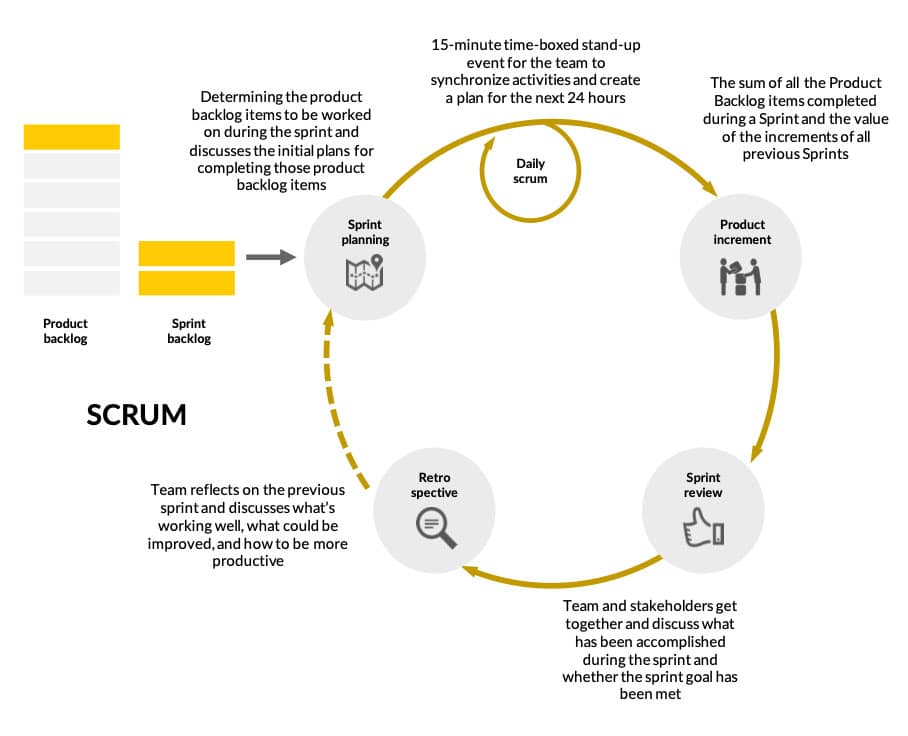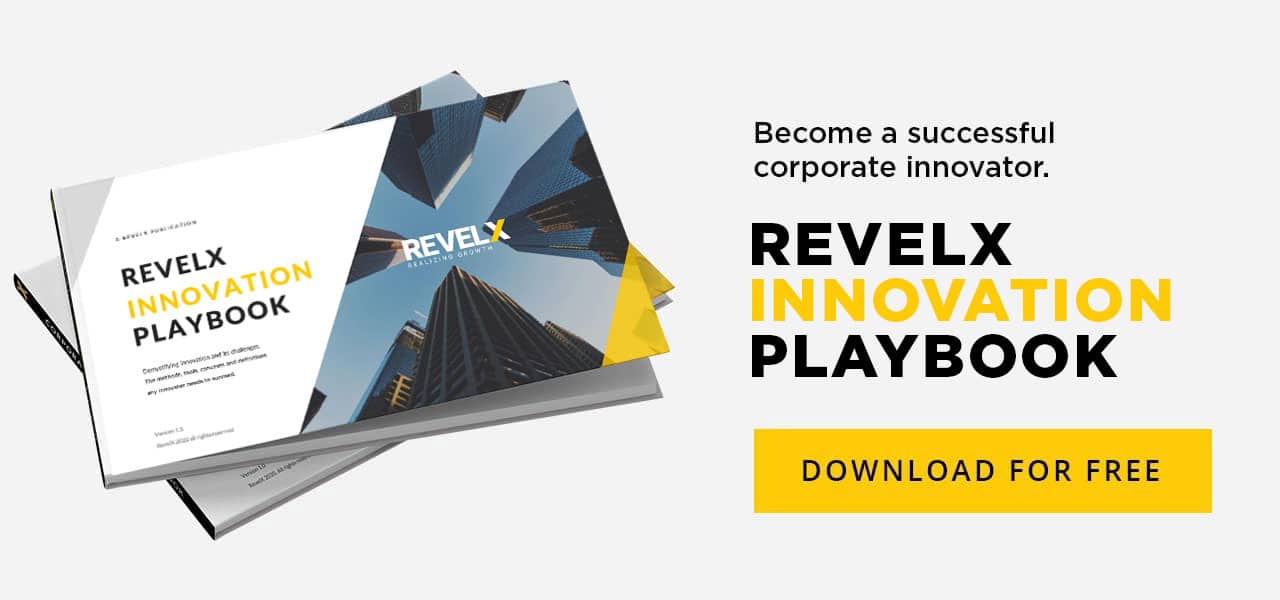The 3 Main Innovation Challenges
Becoming a best-in-class innovator requires mastering 3 main challenges. We recognize a structured innovation process that covers these 3 challenges.
- The Ideation Challenge
- Spotting and creating innovation opportunities
- Balancing the long- and short-term perspective
- Selecting the most promising innovations
- The Validation Challenge
- Assessing the true potential of new ideas
- Avoiding unjustified investments in bad ideas or hobby horses
- Beating the competition on time-to-market
- The Scale-Up Challenge
- Turning on the right growth engines
- Creating the right conditions for growth
- Balancing management of core business and innovations
The 4 Fundamental Innovation Methods
Change the how
The foundation of this innovation playbook is formed by the principles of 4 core business methodologies that have created big paradigm shifts in the way modern companies innovate and develop their businesses. We have learned that by combining the principles of these 4 key methods, innovation processes run faster and lead to better results.

Design Thinking: Designing your solutions based on profound customer insights
Design thinking is all about understanding real customer problems and designing or building prototype solutions to those problems.

6 Design Thinking principles:
- It is people-centered and focused on user’s experiences, specifically emotional ones.
- It is holistic, creates a model that examines complex problems, benefits from system thinking.
- Find problems worth solving, the ones that inspire and need critical creative thinking.
- It tolerates failure and is optimistic.
- It is contextual talk with customers and other people involved in the context of the problem.
- Tangibility rules, visual facilitation and storytelling are great ways to make the abstract clear
and concrete.
Lean Startup: Accelerating validation of ideas by launching Minimum Viable Solutions and measuring impact
Lean startup is all about taking your solution as early as possible to market (as a Minimum Viable Solution), collect customer feedback, learn and improve.

10 Lean Startup principles:
- Identify the real problem to solve
- Fail fast and learn often
- Get out of the building!
- Fake it before you make it
- Start small before you scale up
- Keep iterating
- MVS = awesome, not awful
- Test, measure, and learn!
- Set hypotheses
- Experiment rigorously
Agile: Develop in sprints that drive fast and incremental data-driven improvements
Scrum is an agile framework for developing, delivering, and sustaining products and services through daily communication, flexible work planning, and iterative sprints.
10 Agile principles:
- Make satisfying the customer’s need the highest priority throughout the development.
- Welcome changing requirements, even late in development.
- Deliver improvements frequently: from months to weeks.
- Make sure the business and developers must work together daily throughout the project.
- Build projects around motivated individuals. Give them the environment and support and trust they need to get the job done.
- Promote self-organizing teams.
- Stimulate face-to-face conversation.
- Make sure the sponsors, developers, and users can maintain a constant pace indefinitely.
- Strive for simplicity — the art of maximizing the amount of work not done.
- Make sure teams reflect at regular intervals to become more effective; adjust behavior if needed.

Go-to-Market: Bring value propositions to the market - from launch & initial growth to scaling up
Go-to-market is about the design and execution of a tactical plan that specifies how you will reach your target customers, deliver the product/service and scale for growth
7 Go-to-market ingredients:
- Markets: What markets do you want to pursue?
- Customers: Who are you selling to? Who is your target customer?
- Channels: Where do your target customers buy? Where will you promote your products?
- Product (or Offering): What product/service are you selling? What unique value do you offer to each target customer group?
- Price: How much will you charge for your products for each customer group?
- Positioning: What is your unique value or primary differentiation? How will you connect to what matters to your target customers and position your brand?
- Organization: How will you organize for the right resources (people, competencies, budget) to execute your go-to-market plan?

By integrating the principles of leading innovation approaches in your innovation process you will improve its effectiveness and time to market.

This is the second in a series of blogs on the RevelX Innovation Playbook where we demystify innovation and its challenges. It contains methods, tools, canvases and definitions any innovator needs to succeed.
Marc Douma
Specialist in strategy development, innovation management and strategic alliances. All-round perfectionist. Confronts stakeholders with razor-sharp analysis. Develops solutions that work and creates the necessary support. Direct, committed and always with a sense of humor.
Related posts
Measuring Innovation: A guide to building investment confidence
Discover how innovation accounting ensures your business…
January 21, 2025
Introducing ISO 56001: The new standard in innovation management
ISO 56001 provides organizations with a structured…
January 14, 2025
Manual vs AI-powered subsidies search: A novel approach to public funding
Ever felt like finding the right subsidy feels like…
November 20, 2024




